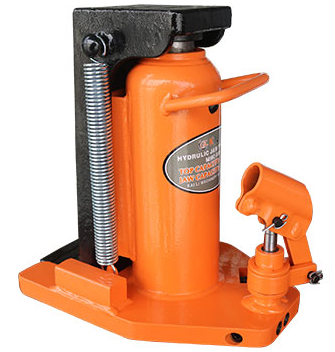The structural difference between claw type jacks and traditional vertical jacks is significant, especially its "L-shaped" claw design, which is the most eye-catching feature. Friends familiar with claw type jacks are also aware that its claws are half of the top load capacity, which means that if the rated load of the claw type jack is 2 tons, then using the claws alone can only lift 1 ton of weight.

The claws and top support of the claw jack belong to an integrated design, and their materials are the same. They share the same drive, but why is there a problem of halving the load capacity? In fact, this involves a problem of force angle. The top support is positioned at a 90 degree vertical force, and the load caused by this angle is minimal. As long as there is no overloading during use, the integrity of the top support can be basically guaranteed.
When the claw is biased towards one side and the force angle is greater than 90 degrees, we consider it as a lever structure. The claw is a power arm that extends to one side, and the longer the power arm, the greater the force output. This can easily cause damage to the entire top support structure. Therefore, when using the claw type jack claw for lifting, it is necessary to reduce its weight to ensure the safe use of the equipment and the safety of the lifting operation.
Tag:
2025-11-26
2025-11-26
2025-11-26
2025-11-19
2025-11-19
2025-11-19
2025-11-12
2025-11-12
2025-11-12
2025-11-05